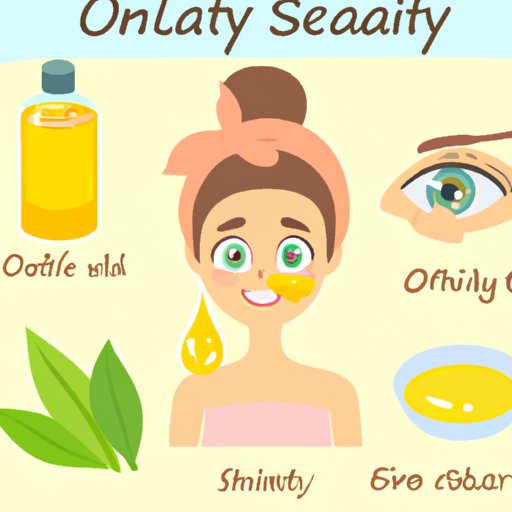Introduction
Oily skin is a common problem for many people. It occurs when the sebaceous glands produce excess sebum, an oily substance that can make the skin look shiny and greasy. Oily skin can also lead to breakouts, enlarged pores, and acne. Fortunately, there are several steps you can take to reduce the appearance of oily skin and keep it under control.
Washing Your Face Twice Daily with a Gentle Cleanser
Washing your face twice daily with a gentle cleanser is one of the most important steps in reducing oily skin. Washing your face helps to remove dirt, oil, and other impurities that can clog pores and lead to breakouts. It also helps to balance the natural oils in your skin, allowing it to look and feel healthier.
When choosing a cleanser, look for one that is specifically formulated for oily skin. Avoid cleansers that contain harsh ingredients, such as alcohol or synthetic fragrances, as these can dry out and irritate the skin. Instead, opt for a mild, soap-free cleanser that is free of harsh chemicals and fragrance.

Exfoliating Regularly to Remove Dead Skin Cells
Exfoliating your skin on a regular basis is another way to reduce oily skin. Exfoliation helps to remove dead skin cells, which can clog pores and lead to breakouts. It also helps to unclog pores, allowing the skin to breathe more easily and look more radiant.
When choosing an exfoliator, look for one that is specifically formulated for oily skin. Avoid exfoliators that contain harsh ingredients, such as beads or granules, as these can be too abrasive and cause irritation. Instead, opt for a gentle exfoliator with natural ingredients, such as lactic acid or salicylic acid.
Use Oil-Free Moisturizers
Using an oil-free moisturizer is essential for keeping oily skin under control. Moisturizers help to hydrate the skin and prevent it from becoming overly dry and irritated. However, if you have oily skin, it’s important to choose an oil-free moisturizer, as this will not clog pores or cause breakouts.
When selecting a moisturizer, look for one that is specifically formulated for oily skin. Avoid moisturizers that contain heavy oils or fragrances, as these can clog pores and cause breakouts. Instead, opt for an oil-free moisturizer with lightweight ingredients, such as hyaluronic acid or glycerin.

Avoid Using Heavy Makeup and Oily Hair Products
It’s important to avoid using heavy makeup and oily hair products if you have oily skin. These products can clog pores, leading to breakouts and other skin problems. Additionally, they can weigh down the skin and make it appear greasier than it already is.
When selecting beauty products, look for ones that are specifically formulated for oily skin. Avoid products that contain heavy oils, waxes, or silicones. Instead, opt for lightweight products that won’t clog pores, such as water-based foundations, mineral powders, and oil-free hair products.

Increase Water Intake and Eat Healthy Foods
Drinking plenty of water and eating a balanced diet can also help to reduce oily skin. Drinking enough water helps to flush out toxins, which can lead to breakouts and other skin problems. Eating a balanced diet full of fresh fruits, vegetables, and healthy fats can help to nourish the skin and keep it looking and feeling its best.
When selecting foods, focus on nutrient-rich options, such as lean proteins, whole grains, and healthy fats. Avoid processed and sugary foods, as these can cause inflammation and worsen oily skin. Additionally, avoid dairy products, as these can increase oil production and lead to breakouts.
Conclusion
Oily skin can be difficult to manage, but with the right care and lifestyle habits, it is possible to reduce its appearance. To keep oily skin under control, wash your face twice daily with a gentle cleanser, exfoliate regularly to remove dead skin cells, use oil-free moisturizers, avoid using heavy makeup and oily hair products, and increase your water intake and eat healthy foods. With a few simple steps, you can achieve healthier, clearer skin.


